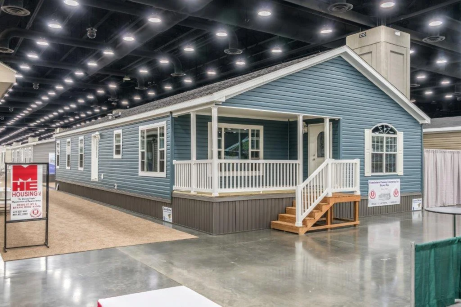The Rise of Prefabricated Homes: Affordable, Sustainable, and Government-Backed Housing Solutions
Prefabricated homes, once dismissed as temporary or low-quality options, are now emerging as a game-changer for homeowners, travelers, and governments alike. Combining cost efficiency, sustainability, and mobility, these modular structures are redefining modern living.
### **1. The Unbeatable Advantages of Prefabricated Homes**
■**Speed of Construction**
Unlike traditional homes that take months (or even years) to build, prefabricated homes are manufactured in controlled factory environments. Walls, roofs, and floors are precision-engineered and assembled onsite in weeks. For time-pressed buyers, this means moving into a fully functional home 30–50% faster than conventional builds.
■**Sustainability**
Prefab homes minimize waste by optimizing material usage during factory production. Many manufacturers use recycled steel, energy-efficient insulation, and solar-ready designs, aligning with global green building standards. A 2023 study found that prefab construction reduces carbon emissions by up to 45% compared to traditional methods.
■**Customization**
From minimalist tiny homes to luxurious modular villas, prefab designs cater to diverse tastes. Buyers can choose layouts, finishes, and smart home integrations, ensuring their home reflects their lifestyle—not a cookie-cutter blueprint.
### **2. Cost Efficiency: More Home for Less Money**
■**Lower Labor Costs**
Factory assembly reduces onsite labor expenses, which account for 40–60% of traditional construction costs. Automated machinery and streamlined workflows further cut prices.
■**Predictable Budgeting**
With fixed factory pricing, buyers avoid the budget overruns common in traditional builds. A 1,500 sq. ft. prefab home typically costs **$150,000–$250,000**, including delivery and installation—up to 20% cheaper than site-built equivalents.
■**Reduced Long-Term Expenses**
Energy-efficient designs slash utility bills. For example, SIPs (Structural Insulated Panels) used in many prefab homes can lower heating costs by 50%.
### **3. Government Support: Policies Fueling the Prefab Boom**
Governments worldwide are incentivizing prefab construction to address housing shortages and climate goals:
■**Social Housing Initiatives**
The UK’s "Modern Methods of Construction" program aims to build 25,000 prefab social homes by 2025, tackling affordability crises. Similarly, Singapore uses prefab technology for 80% of its public housing.
### **4. Debunking Myths: Are Prefab Homes Durable?**
Skeptics often question prefab longevity, but modern engineering has erased these concerns:
■**Hurricane and Earthquake Resistance**: Many units meet FEMA’s disaster-resistant standards.
■**100-Year Lifespan**: High-quality materials like cross-laminated timber (CLT) rival traditional brick-and-mortar durability.
■**Warranty Protections**: Reputable manufacturers offer 10–30-year warranties on structural components.
### **The Road Ahead**
Prefabricated homes are no longer a compromise—they’re a smart choice for financially savvy, eco-conscious, and adventurous buyers. With governments backing their adoption and technology constantly evolving, these homes are poised to dominate 25% of the global housing market by 2030 (McKinsey & Company).
Whether you’re a first-time buyer, a downsizing retiree, or a wanderlust-driven traveler, prefab homes offer a flexible, affordable path to homeownership. As the world embraces sustainability and efficiency, the question isn’t “Why prefab?”—it’s “Why not?”
**Ready to build your future? The foundation starts here.**
Keyword tips: manufactured homes for sale near me; prefab homes; pre fabricated houses; house modular homes; prefabricated houses; modular homes for sale near me; new modular homes for sale near me; manufactured mobile homes; two story manufactured homes; used manufactured homes for sale near me

